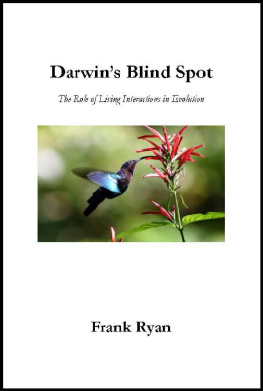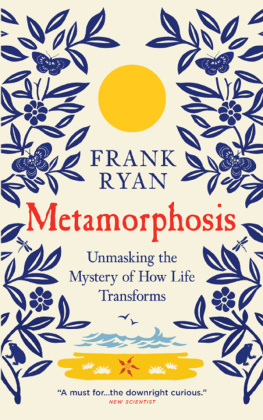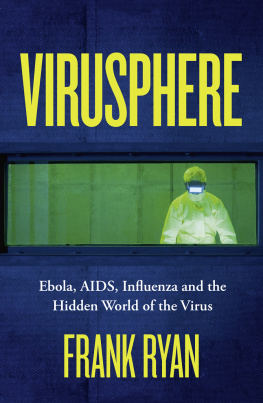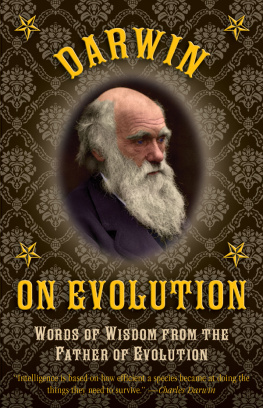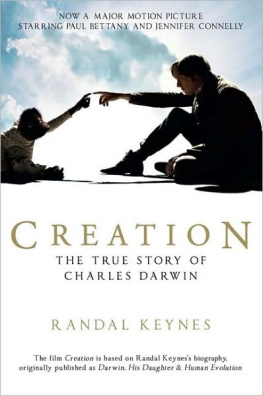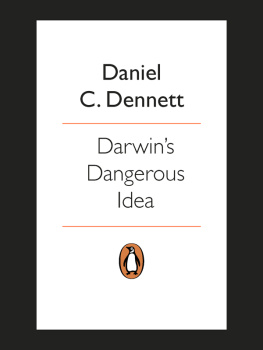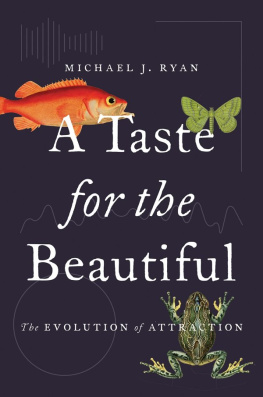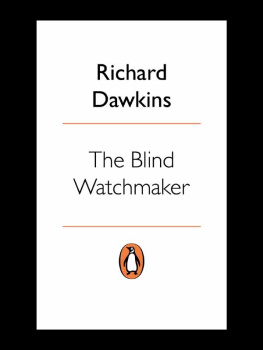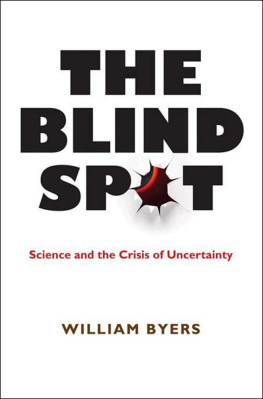Frank Ryan - Darwin’s Blind Spot: The Role of Living Interactions in Evolution
Here you can read online Frank Ryan - Darwin’s Blind Spot: The Role of Living Interactions in Evolution full text of the book (entire story) in english for free. Download pdf and epub, get meaning, cover and reviews about this ebook. City: Sheffield, year: 2015, publisher: Swift Publishers, genre: Religion. Description of the work, (preface) as well as reviews are available. Best literature library LitArk.com created for fans of good reading and offers a wide selection of genres:
Romance novel
Science fiction
Adventure
Detective
Science
History
Home and family
Prose
Art
Politics
Computer
Non-fiction
Religion
Business
Children
Humor
Choose a favorite category and find really read worthwhile books. Enjoy immersion in the world of imagination, feel the emotions of the characters or learn something new for yourself, make an fascinating discovery.
- Book:Darwin’s Blind Spot: The Role of Living Interactions in Evolution
- Author:
- Publisher:Swift Publishers
- Genre:
- Year:2015
- City:Sheffield
- Rating:5 / 5
- Favourites:Add to favourites
- Your mark:
- 100
- 1
- 2
- 3
- 4
- 5
Darwin’s Blind Spot: The Role of Living Interactions in Evolution: summary, description and annotation
We offer to read an annotation, description, summary or preface (depends on what the author of the book "Darwin’s Blind Spot: The Role of Living Interactions in Evolution" wrote himself). If you haven't found the necessary information about the book — write in the comments, we will try to find it.
Darwin’s Blind Spot: The Role of Living Interactions in Evolution — read online for free the complete book (whole text) full work
Below is the text of the book, divided by pages. System saving the place of the last page read, allows you to conveniently read the book "Darwin’s Blind Spot: The Role of Living Interactions in Evolution" online for free, without having to search again every time where you left off. Put a bookmark, and you can go to the page where you finished reading at any time.
Font size:
Interval:
Bookmark:
BOOKS BY THE SAME AUTHOR
Virus X: Understanding the Real Threat of the New Pandemic Plagues
Tuberculosis: The Greatest Story Never Told (published as The Forgotten Plague in the US)
Metamorphosis: Unmasking the Mystery of How Life Transforms
(published as The Mystery of Metamorphosis in the US)
Virolution
The Mysterious World of the Human Genome

First published by Thomson/Texere 2003.
This Swift e-book book edition published in 2015.
Swift Publishers is a division of FPR-Books Limited, Sheffield, UK
The right of Frank Ryan to be identified as the author of this work has been asserted by him in accordance with the Copyright, Designs and Patents Act 1988.
All rights reserved.
No part of this publication may be reproduced, stored in a retrieval system or transmitted in any form or by any means including photocopying, electronic, mechanical, recording or otherwise, without the prior written permission of the right holders, application for which must be made to the publisher.
No responsibility can be accepted by the publisher for action taken as a result of information contained in this publication. Readers should take specific advice when dealing with specific situations.
A CIP catalogue record for this book is available from the British Library.
ISBN 978-1-874082-75-0
The beautiful cover photograph of the purple throated Carib hummingbird feeding was kindly provided by Charles J. Sharp see
http://www.sharpphotography.co.uk
For my sister Mary and my brother Tony
CONTENTS
Why should all the parts and organs of many independent beings, each supposed to have been separately created for its proper place in nature, be so invariably linked together by graduated steps? Why should not Nature have taken a leap from structure to structure? On the theory of natural selection, we can clearly understand why she should not; for natural selection can act only by taking advantage of slight successive variations; she can never take a leap, but must advance by the shortest and slowest steps.
CHARLES DARWIN: The Origin of Species by Means of Natural Selection
ACKNOWLEDGEMENTS
I am indebted to Susan Canavan and David Wilson, who commissioned this book for the United States and the United Kingdom, respectively. Without their enthusiastic support it never would have seen the light of day. My special thanks to my editor, Laura van Dam; my manuscript editor, Peg Anderson, and David Wilsons assistant, Jenna Lambie; and my agent, Bill Hamilton, whose encouragement over the long years has been critical to my writing books of this nature. Many scientists were unbelievably courteous and generous with their time and assistance, not only sharing the joys and labours of lifetimes but also allowing me access to manuscripts of papers and books not yet published. I have listed the names of many new and distinguished friends and a few equally distinguished of long standing in alphabetical order, for their respective contributions will be abundantly obvious from the text and references: Peter Atsatt, Redouan Bshary, Michael A. Crawford, Angela E. Douglas, Michael W. Gray, Daniel H. Janzen, Richard Law, Joshua Lederberg, James Lovelock, John McCoy, Lynn Margulis, Trevor A. Norton, Kris A. Pirozynski, David J. Read, Werner Reisser, Jan Sapp, Ruth Shady, F. Willem Vas Dias, Luis P. Villarreal, Donald I. Williamson, and Terry Yates. Finally, my special thanks go to Mike McEntegart and Chris Potter, who taught me microbiology and virology, respectively, a long time ago and to Brian Jones, who oversaw my humble researches into the immune response of mammals, including myself, to the introduction of a virus known as X174 into their bloodstream.
PRAISE FOR FRANK RYANS PREVIOUS BOOKS
Tuberculosis: The Greatest Story Never Told
Dr Ryan is superlatively good at explaining matters with which the reader may have no previous acquaintance. he makes the story as exciting as a good detective novel. His book should be compulsory reading for those who ignorantly or dishonestly deny the power of science to contribute to human welfare.
The Sunday Telegraph
[Frank Ryan] tells the story of the discovery of the first antituberculosis drugs, and he tells it well, making a potentially dry subject fascinating with an upbeat, fast-moving detective story approach. Will the book appeal to the readership of New Scientist? Yes, it is clearly a popularist book, meant to appeal to a wider circle than scientific literati alone. All power to Ryan.
New Scientist
a superbly documented, dramatic and alarming history of the ancient plague.
Publishers Weekly
This is a story of heroic science performed by all-too-human scientists. Dr Ryan has done an admirable job of tracking down survivors, reconstructing a very complicated theory with newly available material and even-handedly assessing the versions already on record. [This] is an important book.
The New York Times Book Review
[Dr Ryans] book is written at the pace of a mystery thriller and styled as a psychodrama, yet remarkably accurate in scientific detail.
Wall Street Journal
The story is indeed a triumph, or series of triumphs, of modern chemical, biological and medical methods of research, and Ryan tells it well.
The Washington Post
Ryans book makes excellent reading because he combines accounts of his characters achievements with their personal histories, gleaned from diaries, documents, and interviews with their contemporaries.
The New York Review of Books
Virus X: Understanding the Real Threat of the New Pandemic Plagues
Extremely well written Frank Ryan has the page-turning and spine-chilling ability of a good novelist.
Matt Ridley, author of Genome: The Autobiography of a Species in 23 Chapters, writing in The Sunday Telegraph
Spellbinding intellectually adventurous. Difficult to put down.
Valerius Geist, writing in Nature
Ryan takes us through the drama of discovery and challenges the notion that certain questions are too appalling to contemplate.
New Scientist
Compelling and frightening the plot could not be bettered.
The Scotsman
Ryan is very good at making technical matters comprehensible to the lay reader but more impressive still is the way he conveys the intellectual excitement and elation of scientific discovery.
Literary Review
Dr Ryan writes well in a difficult technical field, weaving the technicalities of scientific history, medicine, molecular biology and evolution into the human narratives of a sequence of epidemics, with victims, heroes (the medical teams) and villains (the politicians, more or less). Very readable and disturbing.
New York Times
Meticulously researched with bracing ideas about coevolution, symbiosis and lifes global web. Virus X comes alive when Ryan delves into the science.
Washington Post Book World
INTRODUCTION
A Mystery Of Nature
Our universe is a sorry little affair unless it has in it something for every age to investigate Nature does not reveal her mysteries once and for all.
Next pageFont size:
Interval:
Bookmark:
Similar books «Darwin’s Blind Spot: The Role of Living Interactions in Evolution»
Look at similar books to Darwin’s Blind Spot: The Role of Living Interactions in Evolution. We have selected literature similar in name and meaning in the hope of providing readers with more options to find new, interesting, not yet read works.
Discussion, reviews of the book Darwin’s Blind Spot: The Role of Living Interactions in Evolution and just readers' own opinions. Leave your comments, write what you think about the work, its meaning or the main characters. Specify what exactly you liked and what you didn't like, and why you think so.

